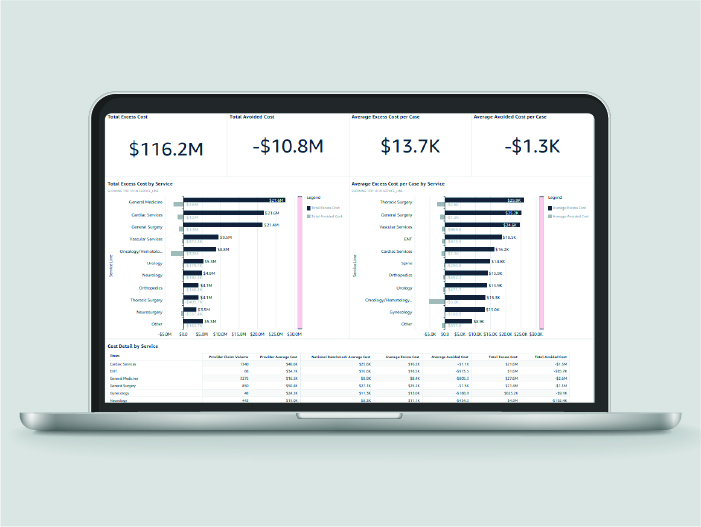Auto logout in seconds.
Continue LogoutAccording to a new report from Milliman, the annual cost of healthcare for a family of four has almost tripled over the last 20 years, going from $12,214 in 2005 to $35,119 in 2025.
Healthcare costs have grown significantly
To create the Milliman Medical Index (MMI), researchers estimated the annual costs of healthcare services for an average person, as well as a hypothetical family of four (two adults and two children), covered under an average employer-sponsored health plan. The MMI separated healthcare costs into five categories:
- Inpatient facility care
- Outpatient facility care
- Professional services
- Pharmacy
- Other services (home healthcare, ambulance services, medical equipment, etc.)
According to the MMI, annual healthcare costs for the average person increased by 6.7% from 2024 to 2025, going from $7,378 to $7,871. This increase was largely due to higher costs for pharmacy (9.7% increase) and outpatient care (8.5% increase). These two categories contributed to 69% of the year-over-year increase in healthcare costs for an average person.
"Pharmaceutical costs have been a leading driver of healthcare spending in recent years," said Dave Liner, principal and consulting actuary at Milliman. "This year, outpatient facility services and pharmacy costs together accounted for nearly 70% of the total cost increase. Much of the outpatient growth is linked to high-cost drugs administered in outpatient settings."
In 2025, annual healthcare costs for a family of four are $35,119, almost triple the cost in 2005 ($12,214). Between 2005 and 2025, healthcare costs increased by 188% while wages only increased by 84%.
Over the last 20 years, the healthcare categories that saw the biggest cost increases were outpatient facility care and pharmacy, both of which grew by over 200%.
On average, the annual increase in healthcare costs has been 6.1% over the last 20 years. In comparison, the average inflation rate during this same period was 2.5%. According to Milliman, the increase in healthcare costs has outpaced inflation during most years except during the COVID-19 pandemic (2020 to 2022).
"Annual growth has averaged 6.1%, far outpacing any other household expense. No other cost category has risen as steeply or as consistently over the past two decades," said Deana Bell, principal and consulting actuary at Milliman. "Outpatient facility care saw the largest increase of any category, rising 286% since 2005, reflecting the growing complexity of procedures now handled outside of inpatient settings."
Advisory Board's cost control-related resources
- Plans have trust and cost problems. Here's how to manage both.
- 5 care navigation strategies to help employers cut healthcare costs
- How to improve your operating margin in today's uncertain times
- 3 strategies for sustainable health plan growth
- Health plan utilization management
- 20 ways health systems can control costs
How high costs are impacting patients
As healthcare costs continue to grow, more Americans say that they are struggling to afford care. According to a 2024 KFF survey, around half of U.S. adults said it was difficult to afford healthcare costs, and 25% said that they or a family member in their household had difficulty paying for healthcare in the last 12 months.
In addition, around 25% of respondents said they had postponed care due to costs while 21% said they did not fill a prescription due to costs. Around 10% of respondents said they had either cut pills in half or skipped doses of their medicine.
Separately, a recent survey from West Health and Gallup found that over 31 million Americans had borrowed around $74 billion to pay for healthcare last year, even though most of them had some form of health insurance.
Among those who said they borrowed money to pay for healthcare, over half (58%) said they borrowed $500 or more, 41% said they borrowed $1,000 or more, and 14% said they borrowed $5,000 or more.
"Too many Americans are racking up medical debt whether they have health insurance or not," said Tim Lash, president of the West Health Policy Center. "A high-priced healthcare system that requires Americans to take out loans or make painful tradeoffs just to stay healthy is in desperate need of policy reform or things will get even worse."
In the survey, 58% said they were at least somewhat concerned about a major health event landing them in debt, with 28% saying they were "very concerned." Across income levels, over 60% of households with annual incomes under $120,000 said they were worried about healthcare debt. Forty percent of households with annual incomes of over $180,000 also reported concerns about healthcare debt.
"It is clear that high healthcare costs continue to burden the American people, and financial insecurity around care is not limited to any one demographic," said Dan Witters, director of wellbeing research at Gallup.
(Bell, et al., Milliman, 5/27; Goldman, Axios, 6/4; Business Wire, 5/27; Myshko, Managed Healthcare Executive, 5/29)
Don't miss out on the latest Advisory Board insights
Create your free account to access 1 resource, including the latest research and webinars.
Want access without creating an account?
You have 1 free members-only resource remaining this month.
1 free members-only resources remaining
1 free members-only resources remaining
You've reached your limit of free insights
Become a member to access all of Advisory Board's resources, events, and experts
Never miss out on the latest innovative health care content tailored to you.
Benefits include:
You've reached your limit of free insights
Become a member to access all of Advisory Board's resources, events, and experts
Never miss out on the latest innovative health care content tailored to you.
Benefits include:
This content is available through your Curated Research partnership with Advisory Board. Click on ‘view this resource’ to read the full piece
Email ask@advisory.com to learn more
Click on ‘Become a Member’ to learn about the benefits of a Full-Access partnership with Advisory Board
Never miss out on the latest innovative health care content tailored to you.
Benefits Include:
This is for members only. Learn more.
Click on ‘Become a Member’ to learn about the benefits of a Full-Access partnership with Advisory Board
Never miss out on the latest innovative health care content tailored to you.


